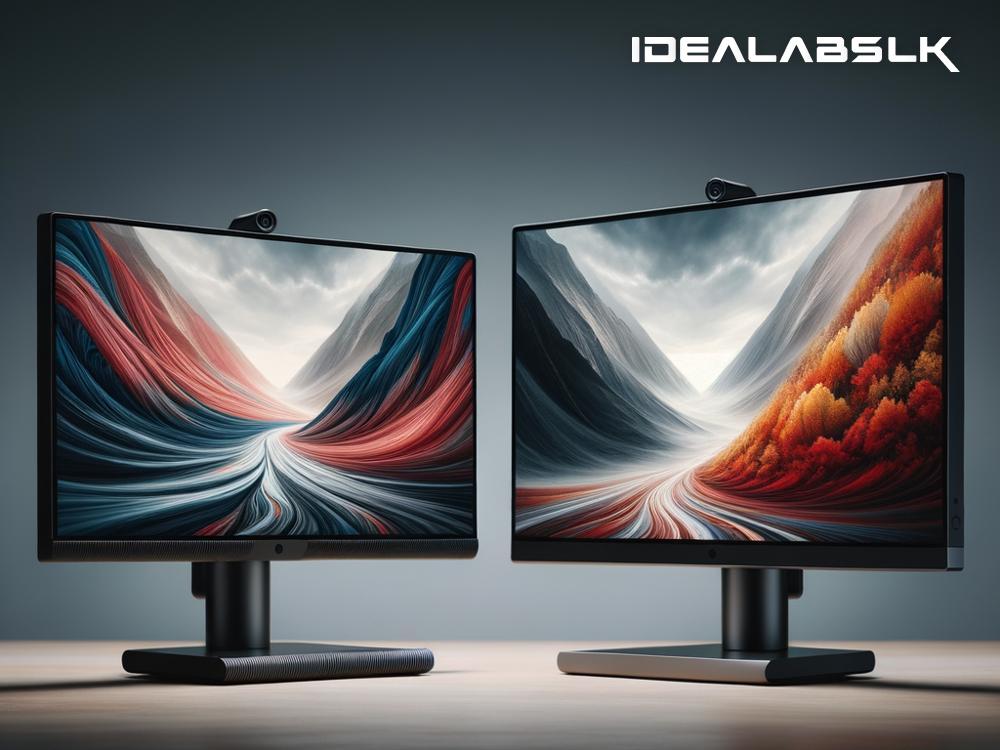Comparing Portable Monitors in 2024: ASUS ZenScreen vs. Lenovo ThinkVision
In the world where remote work and digital nomadism are becoming the norm, portable monitors have evolved into must-have tools for tech enthusiasts and professionals on-the-go alike. As we step into 2024, two giants in the tech industry, ASUS and Lenovo, have each thrown their hats in the ring with their latest offerings: The ASUS ZenScreen and Lenovo ThinkVision. Both of these portable monitors serve the purpose of providing an extra screen real estate for multitasking, gaming, or even enhancing presentations while on the move. But how do they stack up against each other? Let's break it down in simple English.
Design and Portability
First impressions matter, and both the ASUS ZenScreen and Lenovo ThinkVision make good ones, albeit in slightly different ways. ASUS has historically been known for its stylish tech, and the ZenScreen continues this trend with its sleek, ultra-thin design and a premium look that's hard to ignore. On the other hand, Lenovo’s ThinkVision emphasizes durability and functionality, sporting a more robust build and a practical design that appears to be geared towards business professionals.
When it comes to portability, both models are light and easy to carry around, fitting nicely into most laptop bags. However, the slim profile of the ZenScreen might make it the preferred choice for those who count every ounce in their travel gear.
Display Quality
A portable monitor's display quality is crucial, given that it's the main reason you'd carry one around. The 2024 models of both the ASUS ZenScreen and Lenovo ThinkVision boast impressive specs, with high-resolution displays that deliver sharp and vibrant images, making them suitable for everything from preparing presentations to watching movies or even casual gaming.
The ZenScreen edges out slightly with its color calibration feature, offering more accurate colors straight out of the box, which will particularly appeal to creative professionals and photographers. Meanwhile, Lenovo's ThinkVision focuses on eye comfort, featuring technology that reduces blue light emission and screen flicker, which is a boon for users who spend long hours staring at the screen.
Connectivity
In the age of minimalism where the number of ports on laptops and tablets is ever-diminishing, how a portable monitor connects to your device is more important than ever. Both the ASUS ZenScreen and Lenovo ThinkVision come equipped with USB-C ports, allowing for a single cable to transmit power, video, and data. This simplifies the setup process and reduces cable clutter, which is always a plus when working on the go.
The ZenScreen takes it a step further by including an additional mini HDMI port, giving users more flexibility in connecting to a wider range of devices, including older laptops and some gaming consoles.
Additional Features
Beyond the basics, both ASUS and Lenovo have packed some neat features into their portable monitors that might tip the scales for potential buyers. The ZenScreen distinguishes itself with its hybrid signal solution, allowing for compatibility with USB Type-A ports, broadening its range of use with older generation devices. It also includes an intuitive touch screen interface on certain models, adding an extra layer of interaction that can be extremely useful for creative tasks or presentations.
Lenovo's ThinkVision, on the other hand, emphasizes its suite of integrated productivity tools. It comes with software that enhances multitasking capabilities, such as an easy-to-use split-screen feature, making it a compelling choice for business professionals and multitaskers.
Price and Value
When it comes down to it, price is often the deciding factor for many buyers. As of 2024, the pricing of both the ASUS ZenScreen and Lenovo ThinkVision is competitive, reflecting their premium features and build quality. Generally, the ZenScreen is slightly more expensive, which could be justified by its additional features like the touch screen functionality and the extra HDMI port.
Conversely, the ThinkVision positions itself as a value proposition, offering solid performance and practical features at a slightly lower price point, making it an attractive option for budget-conscious buyers or businesses looking to equip their remote workforce.
Final Thoughts
Choosing between the ASUS ZenScreen and Lenovo ThinkVision in 2024 ultimately comes down to personal preference and specific needs. If you prioritize style, display quality, and versatility, the ASUS ZenScreen might be the way to go. However, if eye comfort, durability, and productivity tools are more your speed, the Lenovo ThinkVision will not disappoint.
Regardless of your choice, both of these portable monitors represent the cutting edge of mobile display technology in 2024, proving that you don't have to sacrifice productivity for portability. Whether you are a digital nomad, a business professional, or just someone who enjoys having a dual-screen setup, either of these portable monitors would make a great companion on your journeys.

